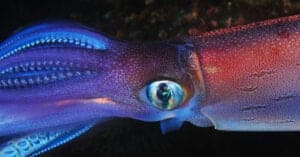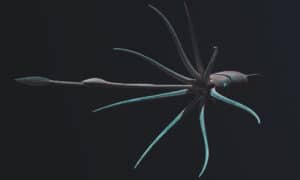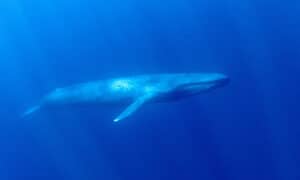Far below the surface of the ocean swims a mysterious behemoth of the deep: the colossal squid (Mesonychoteuthis hamiltoni). There is still much that we do not know about this peculiar giant, and yet it continues to capture our imaginations like no other sea creature on earth, astounding us with its many secrets. Let’s take a look at what we do know about this cryptic cephalopod with 10 incredible colossal squid facts!
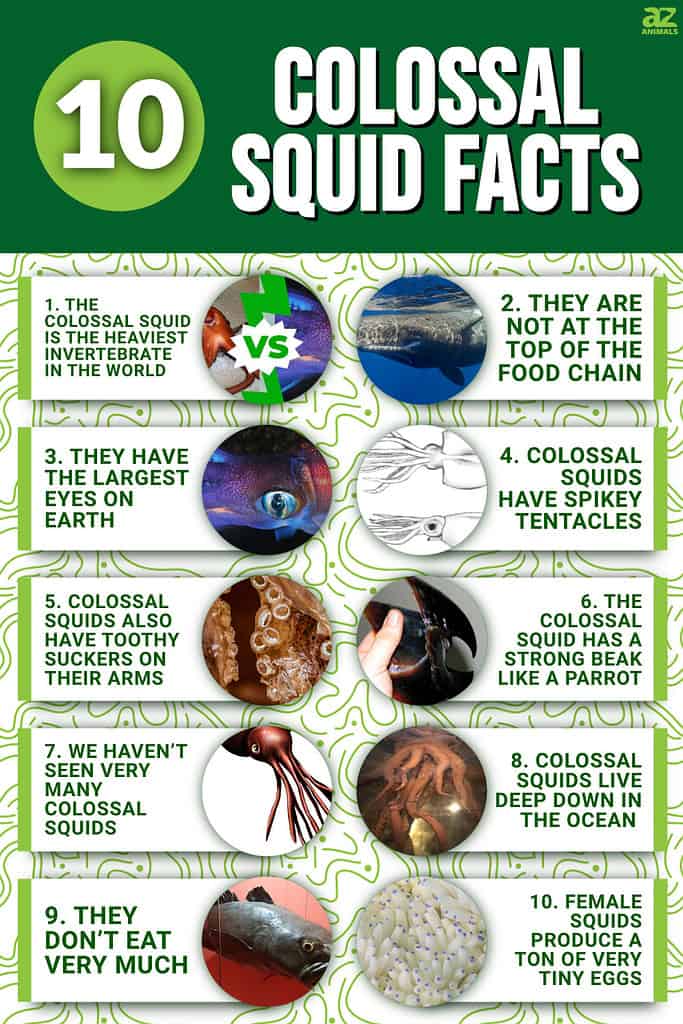
1. The Colossal Squid Is the Heaviest Invertebrate in the World
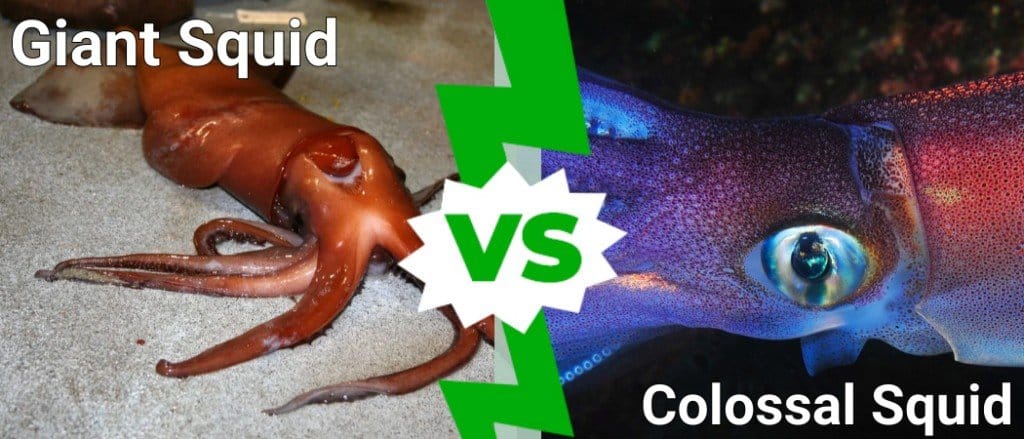
You might have guessed by its name, but the colossal squid is REALLY BIG — in fact, it is the heaviest invertebrate on earth! These gargantuan sea creatures can grow up to 33 feet long and weigh up to 1,500 pounds. However, many scientists think that there are colossal squids in the deep chasms of the ocean that are even bigger than that! Although they are shorter than the aptly named giant squid (the longest on record being 43 feet in length), colossal squids are definitely heavier (giant squids typically weigh around 600 pounds).
2. They Are Not at the Top of the Food Chain
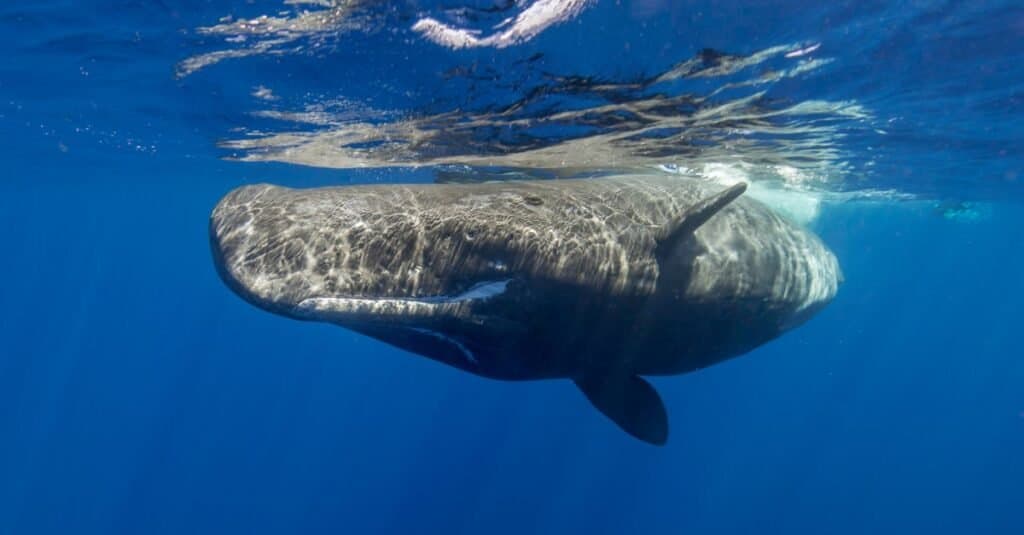
Scientists theorize that up to 77% of a sperm whale’s diet comes from colossal squids!
©wildestanimal/Shutterstock.com
Despite their massive size, colossal squids have many predators in the sea — particularly sperm whales (Physeter macrocephulus). Colossal squids are deep-sea dwellers, but sperm whales can stay underwater for more than an hour. Sperm whales also often dive down over 6,500 feet looking for something to eat. No one has ever seen an encounter between these two massive animals, but sperm whales often have scars that match the sharp serrated suckers of colossal squid tentacles. In addition, the beaks of colossal squids are not digestible, and many have been found in the stomachs of sperm whales. Scientists theorize that up to 77% of a sperm whale’s diet comes from colossal squids!
3. They Have the Largest Eyes on Earth
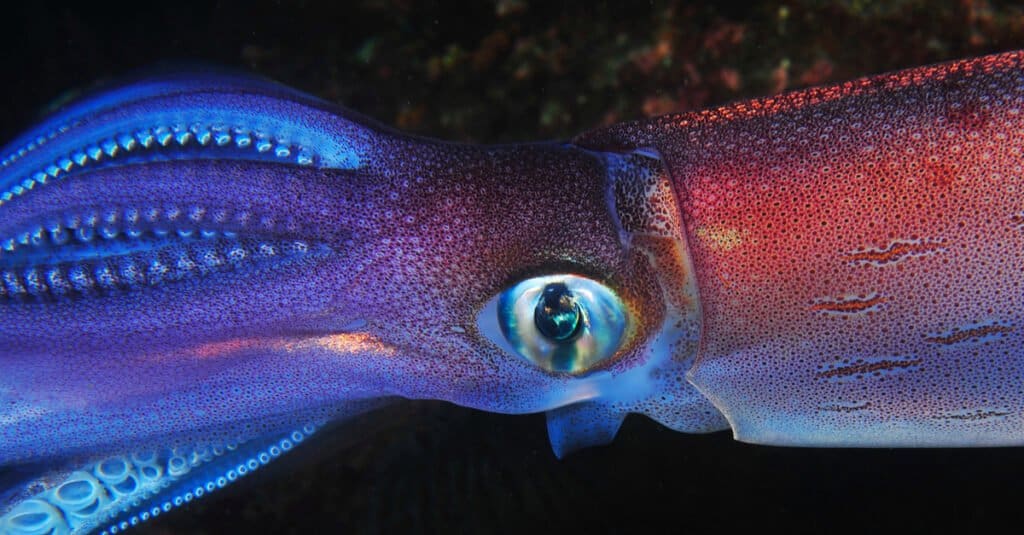
The colossal squid has enormous eyes that assist it in finding prey in the dark ocean depths.
©Rui Palma/Shutterstock.com
Colossal squids are not just gigantic animals. They also have gigantic eyeballs. In fact, their eyes are the biggest of any other animal on earth — including whales! The eyes of a colossal squid are over 12 inches in diameter — that’s bigger than a standard NBA basketball. However, it is unlikely that colossal squids need these gigantic eyes to help them find prey. Instead, scientists theorize that the colossal squid evolved such colossally-sized eyes to help it spot larger predators like sperm whales, especially in the darkness of the deep sea.
4. Colossal Squids Have Spikey Tentacles
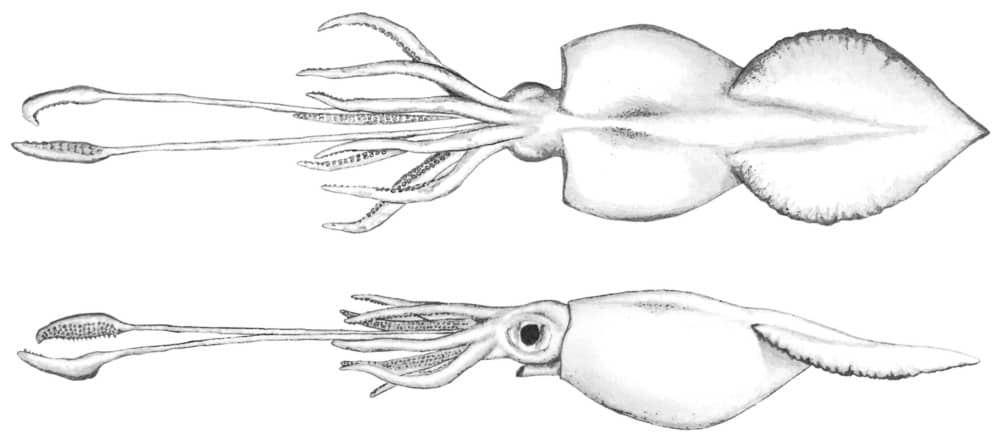
The colossal squid has sharp hooks on its tentacles and arms.
©Wikipedia (Contributor unknown)/ CC BY-SA 4.0 – License
The Cranchiidae family consists of about 20 species, including the colossal squid. Not only is the colossal squid the largest species, but it is also the only one that has sharp hooks on its tentacles! That’s right! if you thought a mammoth squid was terrifying, just imagine one with razor-sharp claws up and down its arms! The colossal squid has eight arms and two long tentacles, and all have different types of hooks on them.
The sharp hooks on a colossal squid’s tentacles can swivel around in circles 360 to 720 degrees. Their arm hooks, on the other hand, have three points that help the squid to dig in and hold their food even better. Scientists believe that these deep-sea creatures are ambush predators that use their many sharp hooks to grab unsuspecting prey that gets too close.
5. Colossal Squids Also Have Toothy Suckers on Their Arms
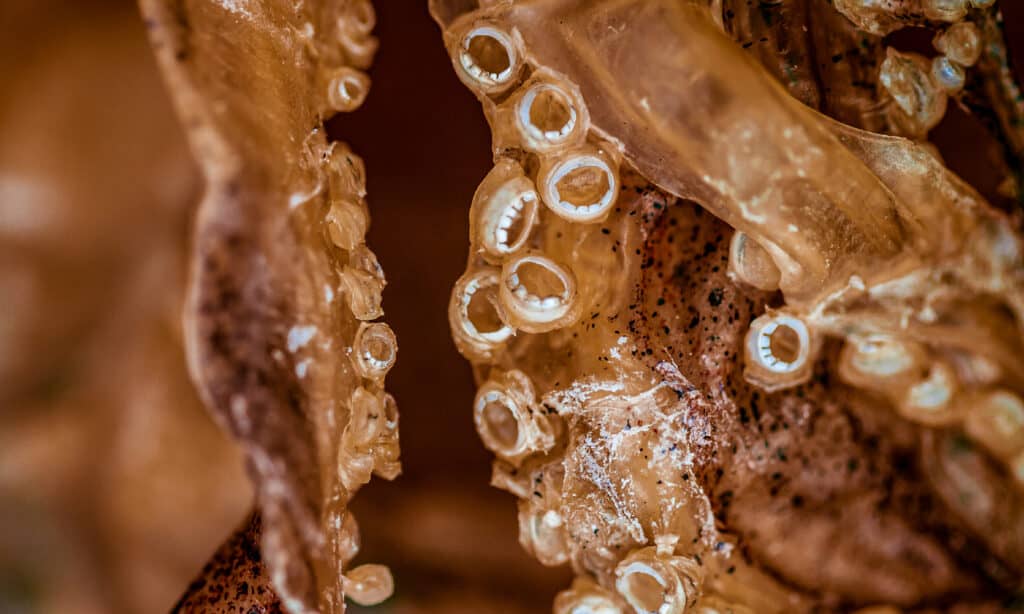
The suckers on a colossal squid’s tentacles have suction cup-like structures with teeth to help it grab objects.
©remotevfx.com/Shutterstock.com
Like other species of squid, the colossal squid also has two tentacles and eight arms. In addition to their many sharp hooks, colossal squids also have hundreds of suckers on each of their limbs. These suction cup-like structures have tough, razor-sharp “teeth” that help squids grab and hold onto prey and other objects. Fishing lines can get caught on their suckers, and the squid can sometimes even make cuts in the line. Fishermen have also noticed circular marks and scars on many of the toothfish they’ve caught. These scares were made by the toothy suckers of a colossal squid.
6. The Colossal Squid Has a Strong Beak Like a Parrot
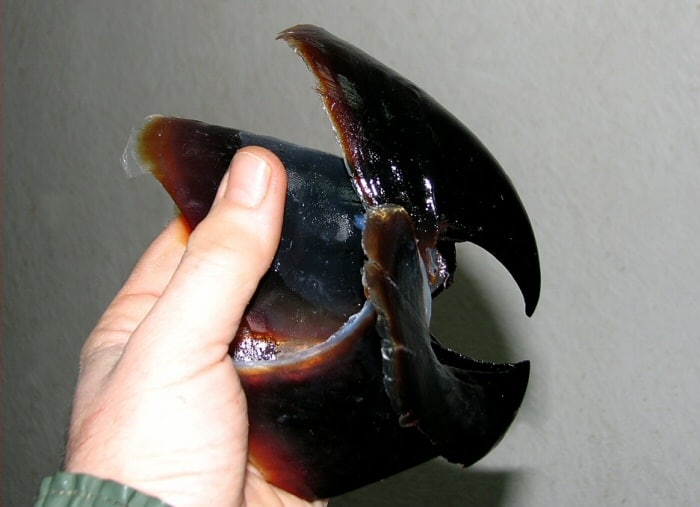
The colossal squid sports a sharp, parrot-like beak it can use to tear through its prey.
©GeSHaFish / CC BY-SA 3.0 – License
In addition to their size, hooks, and toothy suckers, colossal squids have one more weapon in their arsenal: a sharp, parrot-like beak that they use to tear through their prey. Unlike a parrot’s beak, however, the lower section of the colossal squid’s beak actually overlaps the upper one. The squid’s beak is made of a hard chitinous material, and it is surrounded by powerful muscles. This allows the squid to tear apart prey before they gulp it down whole.
7. We Haven’t Seen Very Many Colossal Squids
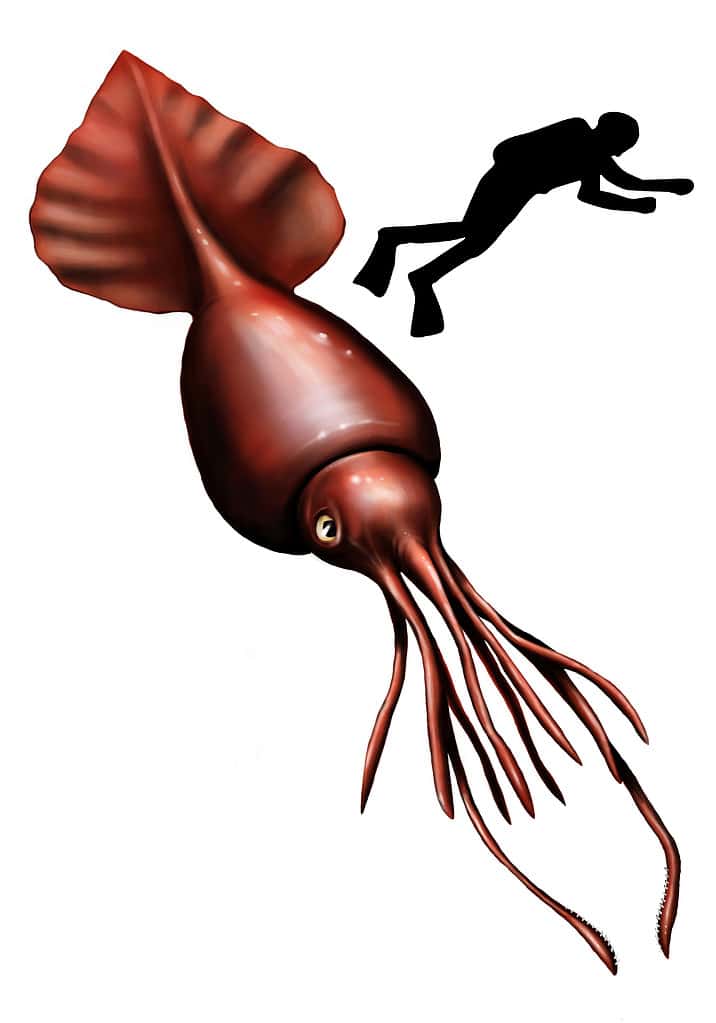
Colossal squids are elusive, with very few sitings reported. Photos are even rare.
©Citron / CC BY 3.0 – License
The very first colossal squid ever recorded and identified was found in 1925. However, to be more accurate, only two of the squid’s arms were actually recovered at the time, from inside the stomach of a sperm whale. Later in 1981, a Russian trawler caught one of the very first full-bodied colossal squid specimens, although it was dead. This squid was about 13 feet long. Then, in 2005, a live colossal squid was finally seen by humans! This squid was accidentally caught over 5,000 feet below the surface, where it was attempting to steal a toothfish from a fishing line. It was far too large to fully bring onto the ship. However, a scientist on board estimated that the gargantuan squid was around 16 feet long and weighed about 330 to 440 pounds.
The largest colossal squid we’ve seen so far was caught in 2007 off Antarctica in the Ross Sea. The female squid was taken to the Museum of New Zealand Te Papa Tongarewa. Researchers found it to be 22 feet long and 1,091 pounds. However, it likely was even longer originally and shrunk, as the squid had been frozen for several months before it was measured. Its beak was surprisingly smaller than the ones previously found in sperm whale stomachs. This suggests that colossal squids can get much bigger than this one.
8. Colossal Squids Live Deep Down in the Ocean
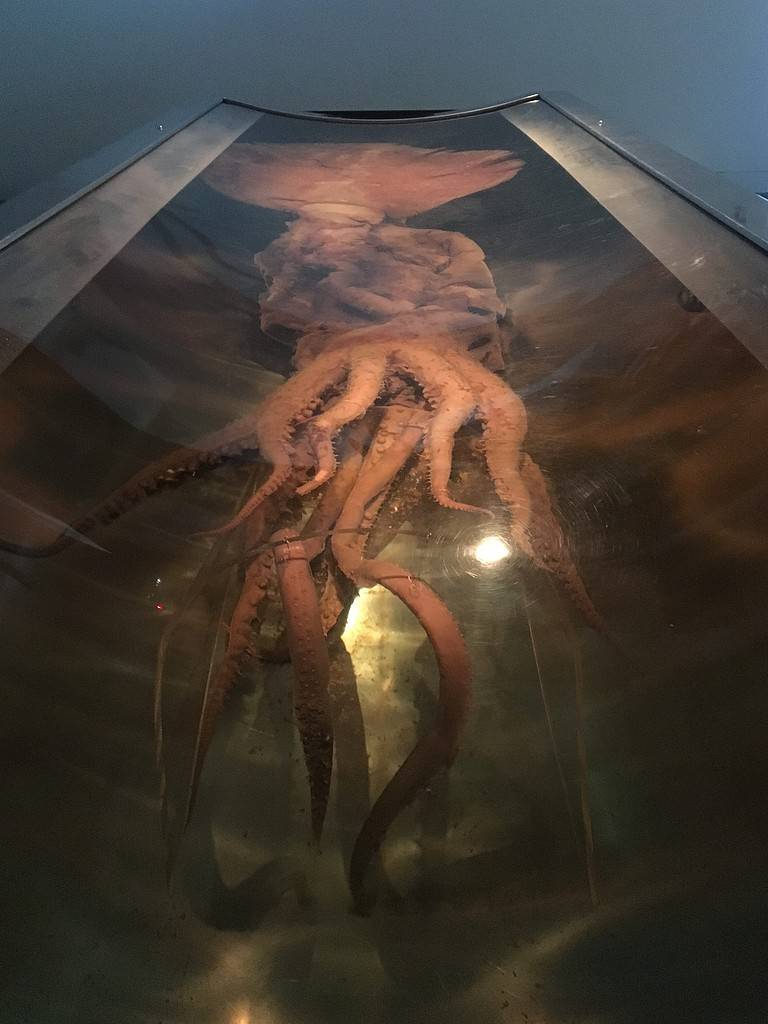
©Scotted400 / CC BY-SA 4.0 – License
The Southern Ocean around Antarctica is home to the colossal squid. So far we know that these giant sea creatures have a range from Antarctica down to southern South America and southern South Africa, as well as the southern tip of New Zealand. Although they live in the deep sea, the level where they are found depends on their age. For example, younger squids usually spend time closer to the water’s surface (from 0 to 1,640 feet deep). Adolescent squids are found in deeper waters (1,600 to 6,600 feet deep). Adult colossal squids are typically found in the mesopelagic zone (650 to 3,300 feet deep) and the bathypelagic zone (3,300 to 9,800 feet deep).
Colossal squids are pretty good at hiding from other creatures in the deep ocean due to their unique coloring: they are red and pink! When sunlight passes through water, red wavelengths are absorbed and become less visible. This means that an animal with a pink or red color, such as a colossal squid, can stay almost invisible at the bottom of the sea.
9. They Don’t Eat Very Much

Scientists believe that colossal squid prey on Patagonian toothfish.
©Nkansah Rexford, CC BY-SA 3.0 <https://creativecommons.org/licenses/by-sa/3.0>, via Wikimedia Commons – License
While we don’t know a lot about these behemoths of the deep, scientists believe that they may hunt using bioluminescent light and ambush prey like Patagonian toothfish and Chaetognatha. Antarctica toothfish are likely prey as well, and many of these fish have scars from the colossal squid. Colossal squids might occasionally eat one another as well. A female squid was discovered in Antarctica with squid remains in her stomach.
Whatever this deep sea giant prefers, it likely metabolizes its food very slowly. Scientists estimate that the colossal squid only needs around 1.1 ounces of food to sustain it each day! Living in such deep waters, colossal squids are likely sluggish and conserve energy as much as possible.
10. Female Squids Produce a Ton of Very Tiny Eggs
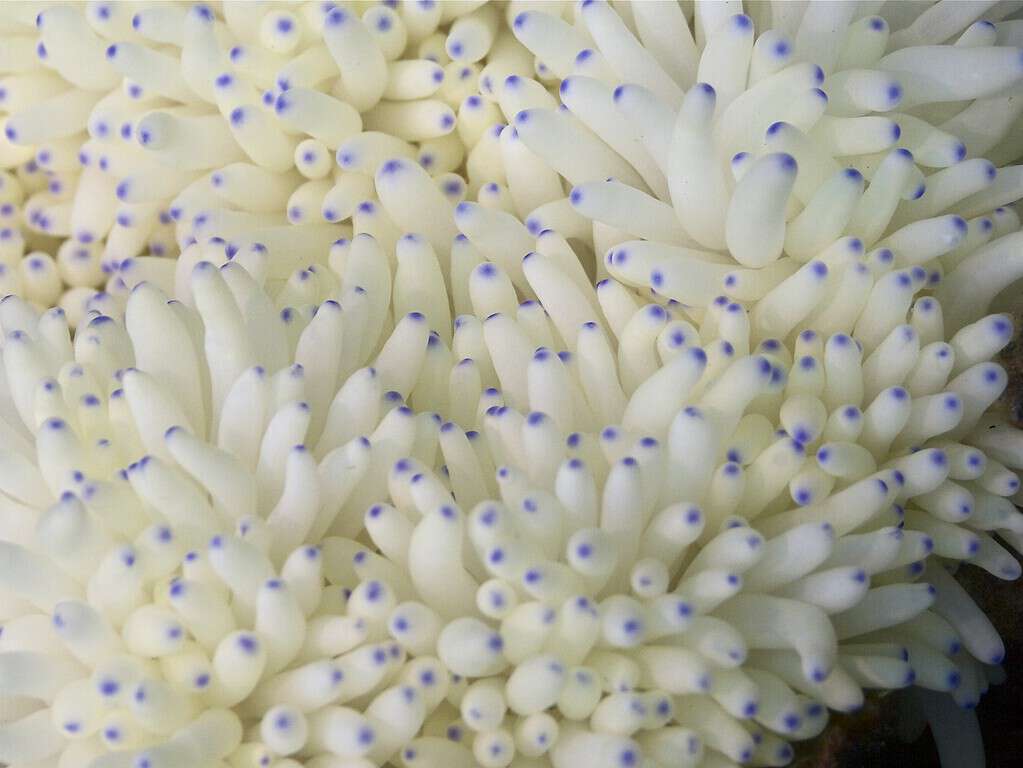
All squids lay eggs. Some lay them in clusters, encased in a large gel-like floating sack, while others lay single eggs.
©Tony Webster / CC BY 2.0 – License
Adult female colossal squids often venture far from their usual dark depths. Scientists believe they likely lay their eggs in more shallow water. In addition, the colossal squid holds the record for having one of the highest fertility rates among cold-water squids, with over 4.2 million oocytes or eggs! Their eggs are also incredibly tiny. They range from 0.1 by 0.08 inches big to eggs as small as 0.05 inches by 0.02 inches! Scientists think that female colossal squids lay their eggs during the summer months. During this time it’s a bit cooler near the surface of the water, between 30.4 to 32 degrees Fahrenheit.
The photo featured at the top of this post is © Oren Rozen / Creative Commons – License / Original
Thank you for reading! Have some feedback for us? Contact the AZ Animals editorial team.



